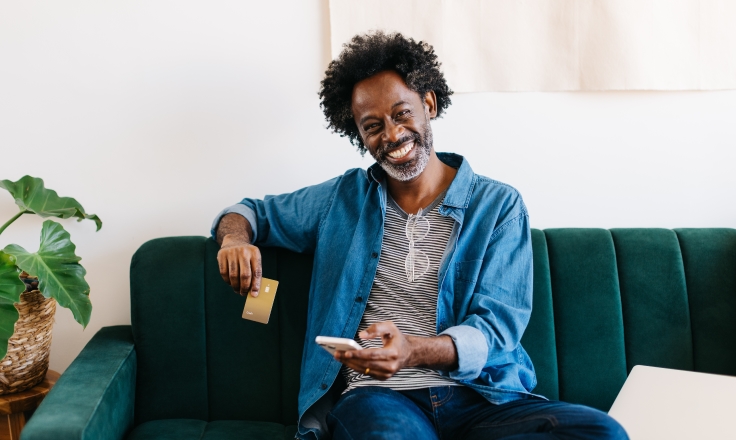Beyond Transactions: Emotional Loyalty and Sustainable Brand Relationships
- Published
- 5 min reading

Capturing what triggers immediate emotions in consumer brand relationships and leads to the act of buying, is one thing. Knowing how to create lasting emotions that will enable a strong and sustainable relationship with a brand, is another. Much more challenging, but also necessary as we are currently witnessing a shift from transactional to emotional loyalty in consumer-brand relationships. According to the 2020 Pii/TLC Marketing Worldwide survey, 80% of customers expect a richer and more emotional relationship with brands. So how do you get there?
What are sustainable consumer brand relationships?
Let’s start with defining sustainability and sustainable products. The most fundamental way of looking at the concept is through the lens of the proven success of purpose-driven brands that are committed to environmental, social and ethical business practices. To see the brand as sustainable, customers have to be ensured that its products, throughout their life cycle, from raw material extraction to final disposal, provide environmental, social and economic benefits while also protecting health and the environment. Or support at least one idea that can be beneficial in a wider context than just certain brand’s ROI.
Now let’s dive deeper into how sustainability influences emotional relationships that consumers have with brands. Think of it as a transition from being acquaintances to becoming friends. For a couple of friends to last, they need to build a deeper connection based on shared values. It's not just about having a good time together once or twice on a party. It's the same with customers and brands – one good score doesn't guarantee a strong and lasting brand experience. It’s the development of emotions through the brand's values what will create a mutual bond that can gradually turn into strong customer engagement and membership. No matter how you define customer loyalty, shared values are always a key ingredient of that mixture.
Sustainability is what addresses a number of sensitive, complex and serious issues that are of deep concern to today's customers. As 2019 CGS Retail and Sustainability study reveals, customers want sustainable products, and over one-third will pay more for them if they come from purpose-driven brands. Especially Gen Z buyers, which rank ethical business and manufacturing as one of their top factors when purchasing a product. It means that the obvious step to fostering true customer loyalty is to create an emotional common ground in the form of a commitment to sustainability.
Why do customers need stronger emotions – also provided by a brand experience?
Emotions are in human nature, but now, as our society becomes more tense and fearful, the need to express them is even greater. This shift has definitely been amplified by the social changes caused by the Covid-19 pandemic. Even though mandatory isolation is no longer needed, the effects of the past few – unprecedented – years are still visible. One of them is the way we express and experience emotions. For example, more volatile conversations on social media and more interest in ultra-violent shows. It's like a form of rehabilitation, making up for the time spent in isolation.
Examples of sustainable loyalty programs
This trend has already inspired a transformation in loyalty programs, regardless of their type. Without completely abandoning the transactional aspect (such as earning points with each purchase and redeeming them for rewards), they are moving toward an emotional relationship based on greater personalization (of products, services, content, and rewards) and an omnichannel approach (creating more emotion throughout the customer journey and at each touch point). How does this translate into action in examples of sustainable loyalty programs?
- H&M integrates sustainability points into its loyalty program. Customers who bring back old clothes or buy new items from the Conscious Collection earn points. More examples come from the world of coffee – Costa Coffee UK rewards program members with double points (one extra “Green Bean”) for bringing their own cup, while Starbucks offers discounts and more loyalty points for doing the same thing.
- Airline programs don’t stay behind – Etihad Airways encourages gests to make a difference by rewarding them with tier miles each time they make a conscious choice for the environment. This could be for bringing less luggage on board or buying sustainable products in the rewards shop.
- Similarly, members of the Adidas Creators Club earn points for writing a comment on a product, participating in a running event organized by the brand, and even running, with points awarded for distance. The more you get involved, participate and train, the more points you get – the message sums it up.
- Meanwhile, Engie's “My Program to Act” loyalty program encourages consumers to use less energy for the good of the planet. This is also the case for the British Gas program, which offers various types of gifts, vouchers and discounts, as well as “Loyalty days” when energy is free. The number of "free" days depends on how long they have been a customer.
Personalization as a tool for creating unique and emotionally resonant experiences
To be effective, the emotion triggered by customer experience has to be unique and personalized. In a 2021 study from Segment, 60% of customers said that they will become repeat buyers after a personalized experience, in comparison to 44% in 2017. These numbers show that the need for more relevant interactions with brands is increasing. And not actually met, it’s worth adding, as only 2 in 10 loyalty program members are satisfied with the level of personalization, according to Bond’s 2019 survey.
Brands can use personalization to increase customer loyalty in multiple ways, not only by offering tailor-made rewards – such strategies as collecting data in real time to offer products fitting the occasion or even weather conditions, including personal details from the moment of enrollment to the program, or utilizing storytelling to invoke emotions are equally effective. Luxury sector provide many examples of focusing on emotional interests of its customers and providing a brand relationship quality. Guerlain, with their wide range of services for members, such as the possibility to participate in the customization of perfume in a bottle “aux Abeilles” or the customization of the bottle of the collection L’Art & La Matičre, brings emotions with the act of mutual creation.
Evaluating how emotions contribute to the overall Customer Lifetime Value
Properly applied, emotion can be a very powerful driver of Customer Lifetime Value. CLV is a measure of a brand's overtime investment in emotionally engaging customers, representing the sum of the discounts expected to be earned over the lifetime of the customer's purchase. Put another way, it's what the customer brings to the table for the duration of their adventure with the brand. To measure the relevance of a campaign or marketing activity, this value is usually compared to the customer acquisition cost.
For example, a frequent shopper with a smaller basket will ultimately be much more profitable than a twice-yearly heavy buyer. This explains why, according to a study conducted by the Center for Retail Management at Northwestern University, 15% of the most loyal customers account for 60% of the company's total sales. Thus, by segmenting your customer base to identify your targets, you can obtain interesting data about the types of customers you want to attract.
To sum it up – there’s much more to emotion, sustainability and customer loyalty…
…that you can find in our newest e-book “Emoloyalty – From Emotional Connection to Brand Success:The Pathways of Loyalty”. Written by Comarch's loyalty experts, this guide includes insights on emotional loyalty and consumer brand relationships from CEOs, marketing specialists and researchers from major institutes and world-famous brands.


